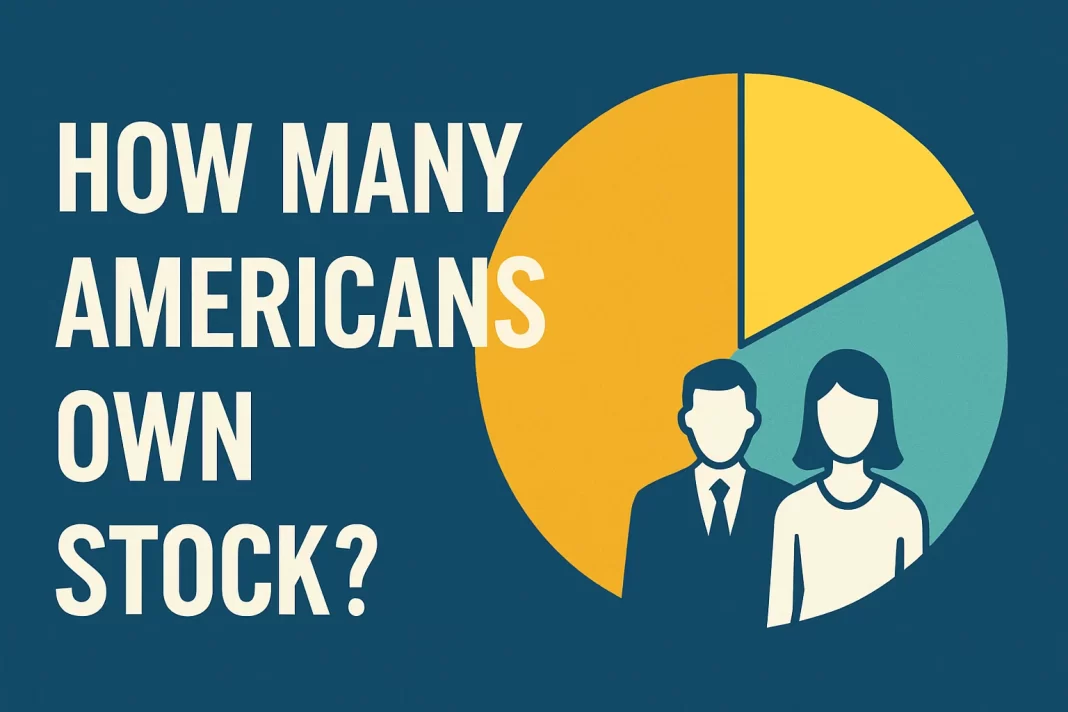📊 As of 2025, approximately 61% of Americans own stock in some form — a figure that reflects a modest recovery in public market participation since the 2008 financial crisis, which saw a dip in investor confidence and ownership.
Ownership is broadly defined and includes:
-
Individual stocks
-
Mutual funds
-
Exchange-traded funds (ETFs)
-
Retirement accounts like 401(k)s and IRAs
This means nearly 2 in 3 Americans are exposed to the stock market in some way — but the depth and impact of that ownership vary significantly.
📉 Stock Ownership Disparities
Despite the widespread appearance of stock ownership, the distribution of wealth invested in the stock market is highly unequal. According to recent data:
🏦 Wealth Concentration
-
The top 10% of U.S. households own about 93% of all stocks.
-
The top 1% alone owns over 54% of corporate equities and mutual fund shares.
This skew means that most Americans have some exposure to the market, but a tiny elite controls the vast majority of the equity wealth.
📊 Ownership by Demographics
💰 By Income
| Income Bracket | % Who Own Stocks |
|---|---|
| $100,000+ | 84% |
| $40,000 – $99,999 | 63% |
| Less than $40,000 | 29% |
Wealthier households not only have more access to capital but also typically enjoy better financial education, advisory services, and tax-advantaged accounts that boost long-term returns.
👥 By Age
| Age Group | % Who Own Stocks |
|---|---|
| 18–29 | 41% |
| 30–49 | 67% |
| 50–64 | 66% |
| 65+ | 63% |
Older Americans are more likely to invest through retirement accounts like IRAs and 401(k)s, while younger generations face hurdles like student debt and housing costs that delay investment.
🎓 By Education
| Education Level | % Who Own Stocks |
|---|---|
| Postgraduate Degree | 82% |
| College Graduate | 78% |
| Some College | 63% |
| High School or Less | 41% |
There’s a strong correlation between educational attainment and investment participation, often due to access to employer-sponsored plans and financial literacy.
🧑🏽🤝🧑🏻 By Race & Ethnicity
| Group | % Who Own Stocks |
|---|---|
| White (Non-Hispanic) | 67% |
| People of Color | 49% |
Systemic issues — including income inequality, access to employer-sponsored retirement plans, and historical barriers to wealth-building — continue to affect investment access across racial lines.
💼 How Most Americans Invest
Most stock market participation happens indirectly through:
-
Employer-sponsored retirement accounts like 401(k)s or 403(b)s
-
Individual Retirement Accounts (IRAs)
-
Mutual funds within these accounts
📌 Only 21% of U.S. households own individual stocks directly — meaning the average American investor doesn’t pick stocks but invests passively through funds.
📉 Why This Matters
The disparity in stock ownership matters because:
-
The stock market is a key engine of wealth growth in the U.S.
-
Those who aren’t participating fall further behind as markets rise
-
Policies that affect capital gains, retirement tax breaks, and financial literacy disproportionately benefit higher-income investors
🧭 Looking Ahead: The Challenge of Inclusive Investing
Improving equity in stock ownership may require:
-
Expanded access to retirement plans for part-time and gig workers
-
Better financial literacy education in schools and workplaces
-
Incentives or tax credits for lower-income households to invest
-
Addressing student loan debt and housing costs, which crowd out investment









